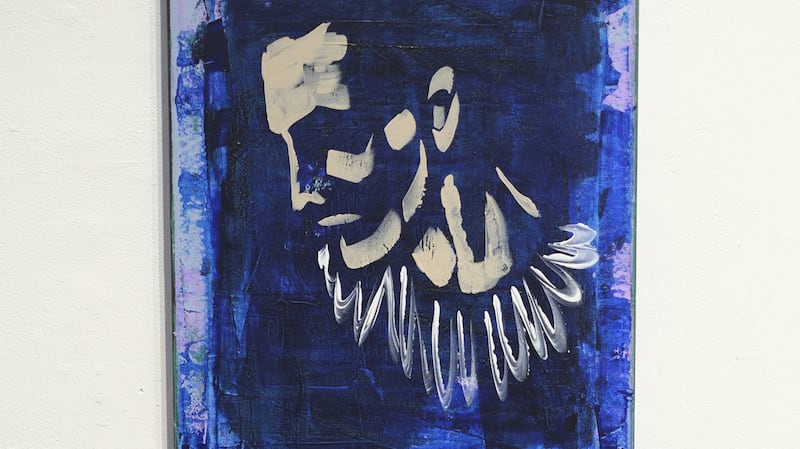Leah Beggs: The Space Between
★★★★☆
Solomon Fine Art, Balfe St, Dublin
William Hazlitt once famously dismissed the paintings of JMW Turner as "pictures of nothing and very like". He meant it as an insult, but actually it was close enough to being a reasonable description of what Turner was trying to do. It's just that Hazlitt couldn't see the point of what he was trying to do. His words could equally serve to describe Leah Begg's paintings in The Space Between, in which she largely dispenses with the solid matter of the world in favour of the air, light, mist, cloud and water that lies between.
She does ground the larger oils, however, in a series of fine small acrylic studies that are more conventionally representational, coming across as direct responses to the landscape. And presumably that landscape is not a million miles away from the artist’s home in Oughterard, Connemara. Certainly the palette looks appropriate, and much else about the paintings. Not least their watery character. Beggs uses liberally diluted washes of oil paint, with plentiful drips, in a way that recalls Barrie Cooke’s work. The dilute pigment, and the spirit of the work, that is, as in Cooke’s Heraclitian motto “everything flows”, rather than any direct visual resemblance. Classical Chinese painting also comes to mind.
Besides the washes, she does accrete more opaque coats of pigment, not to the point of building up any degree of impasto, but enough to generate a sense of mass. These masses can be as pale as cloud or mist, or as dark and dense as sodden bogland – or pale and dark as cloud against bogland. But in essence she is not so much trying to figure out a way to depict something as she is drawing on the environment around her, and her experience of it, to devise a pictorial language that is robustly complete and true.
She certainly does so. That's particularly evident when you see the work in reality: reproductions don't do it justice. She is measured and very sound in her use of colour, which is to say, she is restrained, but exact. Tonally she pushes things a bit more, generating considerable contrasts, for example, but always to great effect. The longer you look at each piece, the more its strengths become apparent, and that is a real test. Until February 2nd solomonfineart.ie
Some Concrete Possibilities
★★★★☆
The Library Project, 4 Temple Bar, Dublin
Siobhán Mooney, the second recipient of the Black Church Print Studio Emerging Curator Award, devised Some Concrete Possibilities. Her starting point was the role of chance in the process of making art. It's safe to say that chance plays at least some role in all sorts of creative endeavours, to the extent that being open to chance is a necessary precondition to creativity. Mooney has enlisted works by four artists, Cara Farnan, Garreth Joyce, Helen MacMahon and Lee Welch to exemplify different ways in which chance can figure. In fact two of them actively employ chance as a creative strategy.

She includes several of Lee Welch's paintings triggered by a tarot card reading in his studio (they recently also featured in Pallas's Periodical Review). The results are beyond the artist's control but tie in with archetypal tarot characters, and they are coloured by preconceptions – you may believe the reading is meaningful, or you might be skeptical. You bring this preconception to both reading and painting. It is this invisible aspect, hinging on the receptivity of the participants, that determines the nature of the experience, and perhaps Welch has in mind here a parallel with aesthetic experience.
Gareth Joyce’s raw materials are the layers of posters pasted on to hoardings and other surfaces throughout the city. Natural erosion, deliberate tearing and gradual superimposition result in accidental collages, and these appear to be what particularly interest Joyce. An explanatory note suggests that he photographs the composite imagery on site, but also recovers the fragmentary originals, all serving as material for the photographed digital collages that he exhibits. They send thwarted or mangled messages, arousing expectation of coherence, and their actual incoherence is at odds with their promise of graphic directness.
Cara Farnan's two pieces are variations on ideas to do with "weather-making", once considered as witchcraft. Her Windcaller is a painted clay vessel containing a sound recorder that plays a three-minute looped recording of her own voice, a diminutive but very atmospheric work. The components of Model are a monumental drawing and larger-than-life version of a tiny clay vessel that holds water. As the water evaporates the vessel is topped up. It is as if the larger depictions of this tiny apparatus represent a bid to grasp the vast underlying natural process of the hydrological cycle.
Both of Helen MacMahon's sculptural installations depend on setting light free in different ways. Interface is just that, a suspended, dynamic wall of Fresnel lenses, occupying the gallery's large window onto Temple Bar and constantly remaking, and destabilizing, the relationship between interior and exterior. Behind a blackout curtain, meanwhile, Circe is an ingeniously improvised construction – including mirrored Mylar, a length of drainpipe, music stands and an electric motor – that projects a swirling, kaleidoscopic pattern on to an inner wall, an enveloping sea of colour. They are both ambitious, impressive works in a diverse, thoughtful show. Until January 30th blackchurchprint.ie











